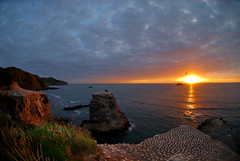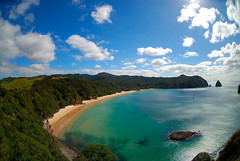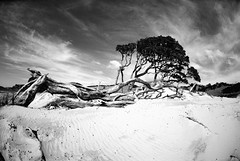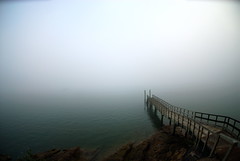I have a variety of lenses in my camera kit. One that I do not have, and has me curious, is a fisheye lens. I mostly understand what it does: it captures an image with distortion similar to what you see through a door's peephole.
Given the distortion, are there any particular types of shots for which a fisheye lens is useful?
Answer
When I started considering the purchase of a fisheye lens I was worried that I wouldn't use too often. Boy, was I wrong. I loved it so much that it actually gave me motivation to take more pictures and it grew to be my favorite lens. Unfortunately I had to sell it when I switched to a full frame camera and now I miss it a lot.
First of all let's start by clarifying that there are two types of fisheye lenses for SLR cameras:
Circular - this one usually has a 180° (even more with some lenses) field of view and creates a circular, strongly distorted image in the center of the frame.
Full-frame - this one has slightly narrower (180° diagonally) field of view and produces an image that covers the whole frame with much less distortion.
Both types produce images that are significantly distorted but that is either is exactly what you want or it can be corrected with the software, but it certainly doesn't have to look as what you see through a door's peephole. Situation that I think a fisheye lens is useful are:
Close distance sport/action shots - people jumping on bikes, skateboards, snowboard or skis. Fisheye gives a very cool feeling of immersion in that type of shots. I wish I had taken more of those.
Landscape - when all the objects are far away from the camera it is possible to minimize the fisheye appearance by putting the horizon in the center of your image like I tried in the shots below:
Personally, I'd rather stick to rectilinear wide-angle lenses (like the Nikkor 14-24) for landscape but fisheye can really produce a very compelling result as well.
Interiors/panoramas - fisheye helps shooting in confined spaces. Most professional shots of car or plane interiors are done with fisheye lenses and occasionally stitched together in 360° panoramas. Using a fisheye for panoramas allows to take less shots to cover the whole view.
Other situations where wide field of view is important. Sometimes choosing a good point of view will allow you to reduce the distortion to a point where it doesn't require software correction.
Bottom line is that I wish for Nikon to release a new FX size fisheye every day.




No comments:
Post a Comment